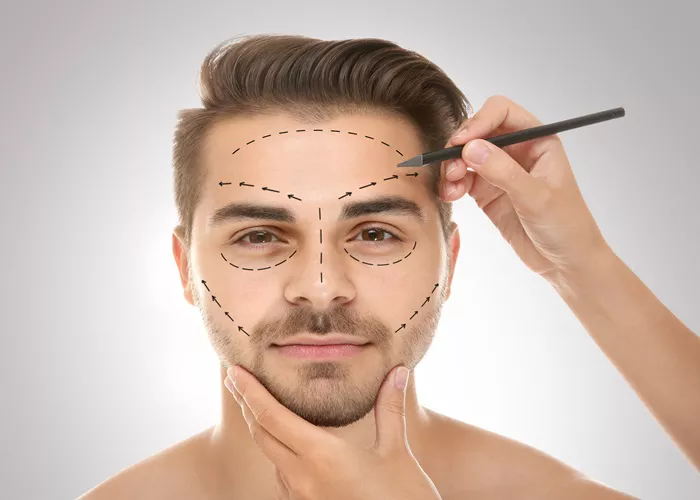In recent years, America has grappled with the evolving complexities of gender identity and sexual labels, navigating an ever-expanding lexicon of terms such as “cisgender,” “alpha male,” and “trad wife.” These terms, initially introduced to promote understanding and inclusivity, have at times become points of contention, with some using them as slurs to imply that those who adhere to traditional identities are backward or stuck in outdated ideals. However, a new cultural trend appears to be emerging—one that celebrates a return to traditional masculine ideals.
The Rebirth of Masculinity
Earlier this week, a significant cultural shift was underscored when Meta announced it was dismantling its Diversity, Equity, and Inclusion (DEI) programs. On the same day, Meta CEO Mark Zuckerberg appeared on Joe Rogan’s podcast, openly discussing the value of “masculine energy” and critiquing corporate America for becoming “culturally neutered.” This statement from Zuckerberg—a figure not typically associated with traditional masculinity—raised eyebrows. Once considered an unlikely advocate for macho ideals, Zuckerberg’s recent comments, alongside his physical transformation through martial arts, have underscored the rising trend of redefining masculinity in modern culture.
Zuckerberg’s embrace of traditionally masculine attributes is part of a broader cultural shift toward a more rugged, defined male image. As evidenced by the rise of Facial Masculinity Surgery (FMS), this new trend isn’t confined to the boardroom or media soundbites—it’s making waves in the world of cosmetic surgery as well.
A Surge in Facial Masculinity Surgery
Beverly Hills-based facial plastic surgeon Arash Moradzadeh, who specializes in FMS, notes that male patients are increasingly seeking procedures that emphasize structure and definition. “Men want to look more manly now,” he explains, pointing to the cultural acceptance of cosmetic surgery to enhance masculine features such as strong jawlines and defined cheekbones. “The male aesthetic has shifted. No more puffy cheeks or soft features—men want definition.”
Dr. Gregory Mueller, another prominent Beverly Hills surgeon, concurs, citing an increasing demand for procedures that highlight traditionally masculine characteristics. “There’s a noticeable shift in the paradigm,” he says, adding that men today want to look more like the classic archetype of masculinity. “Larger noses are seen as more masculine, and patients want to define their features to embody strength.”
The Influence of Hollywood and Beyond
This shift toward rugged masculinity is clearly evident in Hollywood. Once-popular representations of men as gentle, soft-spoken, and emotionally attuned—exemplified by actors like Harry Styles and Timothée Chalamet—are now being overtaken by a resurgence of more traditionally masculine figures. Movies like Yellowstone, which portrays rugged masculinity in the form of cowboy characters, have captured the public’s attention, contributing to the cultural acceptance of a more defined, physical male image.
The rise of Yellowstone coincides with the growing popularity of celebrities like John Mulaney, Chris Rock, and even Bad Bunny, all of whom are now sporting more chiseled, angular jawlines—traits once considered archetypally “American” in their masculinity. Hollywood’s portrayal of strength and toughness, particularly in male characters, has helped reinforce the appeal of such aesthetics.
This cultural shift has rippled beyond the confines of Hollywood, reaching into mainstream America. The American Academy of Facial Plastic and Reconstructive Surgery (AAFPRS) reported that nearly half of its members anticipate an increase in male patients seeking both surgical and non-surgical treatments in the coming years, with a notable rise in younger men under 35 seeking facial enhancements.
The Cost of Masculine Transformation
Facial Masculinity Surgery isn’t cheap. Procedures can range from a few hundred dollars for simple injectables to upwards of $300,000 for more extensive surgeries, including chin implants and facelifts. Yet, despite the steep prices, demand continues to grow. Celebrities already investing large sums in their transformations—some reportedly spending over $250,000 on facelifts—are contributing to the normalization of such procedures for the broader population.
As minimally invasive techniques become more accessible, a growing number of men are turning to cosmetic surgery to achieve the idealized masculine features celebrated in media and pop culture. The expansion of options for discreet, quick recovery treatments has lowered the barriers for many who might previously have considered these procedures out of reach.
What’s Behind the Change?
Several factors appear to be driving this resurgence in traditional masculinity, with both entertainment and politics playing significant roles. As Dr. Moradzadeh points out, television shows like Yellowstone have popularized rugged, strong male characters. The influence of political figures, particularly the election and re-election of Donald Trump, has also contributed to the celebration of traditional masculine traits, with Trump’s associations with strong male figures adding to the cultural zeitgeist.
Furthermore, the rise of public figures like NFL star Travis Kelce—whose relationship with Taylor Swift has captured the public’s imagination—underscores the shift in cultural values toward more clearly defined gender roles. Kelce’s embodiment of traditional masculinity, paired with Swift’s femininity, aligns with the growing desire for more distinct gender norms, echoing a return to classic ideals of masculinity and femininity.
Related topic:
Bradley Cooper’s Ageless Look Sparks Plastic Surgery Speculations
Han Ga-in Opens Up About Plastic Surgery Consultations
MercyOne Genesis Plastic Surgery Expands After Dr. Eckhardt’s Retirement


